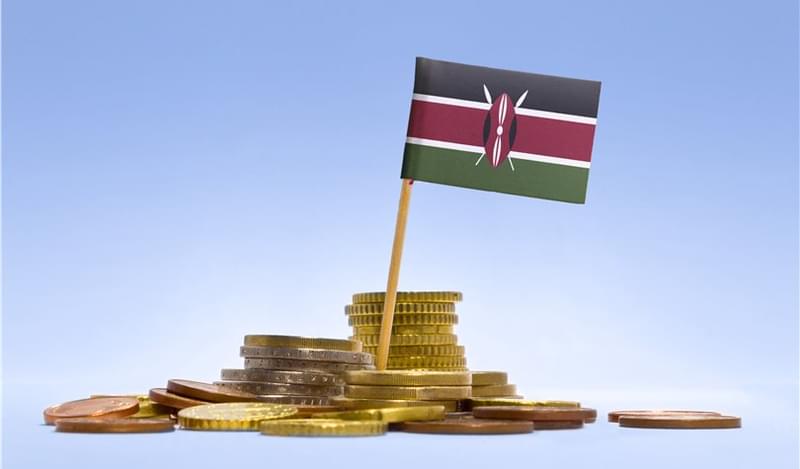By most economic and political measures, Kenya – one of Africa’s most diverse economies – has had a tough year.
A crippling drought in late 2016 and early 2017 sent food prices skyrocketing and kept inflation above the Central Bank’s target range of 2.5-7.5%; analysts at Stanbic expect inflation to come in at just under 8% (7.95%) for full year 2017, an impressive feat given the 13-15% range seen in the first quarter this year.
Regional declines in private sector credit growth – a big driver of economic output – persisted throughout the bulk of this year, dropping well below the five-year average rate of 14.4% to just 2% as of September 2017 – and well below the government’s stated target of 18.3%. This was only marginally higher than credit growth seen in July this year, when most analysts believed the market bottomed out as borrowers held off tapping the market in the run-up to the August elections.
At the same time, asset quality has deteriorated – with non-performing loans growing 25.5% year on year in Q3 to KES189.5bn, up from KES151bn during the same period before, and gross NPLs rising from 11.2% to 12.3%, according to figures from Bloomberg.
As a result, banks have largely remained more selective in their balance sheet exposure and continued to flock towards near risk-free government assets, with the effects of the 2015 amendment to the Banking Act – and the interest rate cap introduced therein – continuing to ripple across the country’s investment environment. The interest rate cap has resulted in banks shifting away from lending to consumers, choosing instead to invest in government treasuries, which offer better returns on a risk-adjusted basis. Government security allocations among listed banks continued to accelerate, growing 15.2% to KES776.3bn in the third quarter of 2017, up from KES684.5bn during the same period the year before.
Then, there’s the election(s). The Supreme Court decision to invalidate the results of Kenya's 8 August election was hailed as an impressive victory for democracy in Africa, with serial opposition contender Raila Odinga having successfully challenged the poll that led to incumbent President Uhuru Kenyatta’s victory over “irregularities” that included the hacking of the election commissioner’s database. The waters were made murkier, however, when Odinga pulled out of a hastily-organised re-run scheduled for October and asked supporters to boycott the poll, leading, inevitably, to Kenyatta’s re-election – with 98% of the vote and a turnout of just under 39%.
While the latest poll result was recognised internationally and legal challenges to the vote cast aside by the courts, the whole affair exacerbated ethnic tensions and raised questions about the health of Kenya’s public-sector institutions – not the least of which its embattled Election Commission and the Supreme Court.
Though the post-election violence seen in the wake of both August and October polls was, thankfully, nowhere near the scale of that seen following the December 2017 election, analysts are concerned about growing tail risks. The opposition National Super Alliance’s (NASA) decision to declare a “resistance movement” in response to Kenyatta’s re-election and its bid to stage a mock inauguration for Odinga as the “people’s president” – a move it was pressured into abandoning by foreign powers including the US hours before it was due to take place – only served to escalate tensions at a delicate time. Despite a temporary de-escalation heading into 2018, Odinga still refuses to recognise Kenyatta and stokes the same sentiment among his followers, many of whom feel excluded from meaningful political participation.
Analysts are particularly worried about how high unemployment – which, officially, has hovered in the 10-12% range over the past few years – and a persistent fiscal deficit will affect the country’s trajectory in the medium term. The East African country is facing a deficit of about KES524.6bn (approx. USD5.08bn) against a budget of KES2.29tn, with the treasury planning to bridge the gap through KES268.6bn in domestic and KES256bn in foreign borrowing.
This, and the country’s new borrowing to shore up the standard gauge railway project, will surely take a toll on the Kenya’s debt burden. According to Standard & Poor (S&P), Kenya’s rising public debt is the biggest economic risk for the country, after hitting 54.4% of GDP in Q1 2017 and rising to KES4.4tn by the end of September, mainly underpinned by bilateral loans with China; this is up more than fourfold from 2014 levels, according to the rating agency and official statistics.
2018: A Make or Break Year for Banking?
Banks have remained surprisingly resilient despite the flight to quality among the country’s lenders, deteriorating asset quality, and the interest rate cap. Headcounts at a number of FIs large and small have slimmed while some 40 branches have closed in a bid to streamline operations. Some analysts believe it could be a make-or-break year for the sector.
Many of the country’s lenders struggled to adjust to the changes brought about through the Banking Act amendment – which capped lending rates at 4% above the Central Bank Rate and imposed a floor on the deposit rate of 70% of the CBR. This led to a brief wave of consolidation that saw seven mergers and acquisitions, most recently with Diamond Trust Bank Kenya (DTBK) completing its acquisition of Habib Bank (K) Limited in July this year.
“We would have expected even a lot more consolidation by now, given the year is now coming to an end, due to the attractive valuations in the banking sector, and we are surprised that some of the smaller banks have managed to stay independent this long, as we would have expected weaker banks that don’t serve a niche, or don’t have a clear deposit gathering strategy, being forced to merge or be acquired,” conceded analysts at Cytonne, a Nairobi-based investment fund, in a recent report on the sector.
While many (including this publication) anticipated a wave of acquisitions stoked by a tough operating environment and an over-crowded market, most of the acquisitions hitherto saw foreign regional lenders strategically enter the Kenyan market, making it difficult to assess the overall effect going forward. On the one hand, new and larger foreign lenders entering the market can help their local counterparts disperse their operational risks, make their systems and processes more efficient, introduce new revenue streams and products (i.e. digital banking services), and help them benefit from economies of scale as they look to bolster their command in niche markets; on the other, with the number of domestic banks remaining more or less the same, the sector remains overbanked, with many of the factors behind a deterioration in the sector – rising NPLs, the interest rate cap – still in place.
“With the deteriorating asset quality, coupled with the interest rate caps, we expect prudence and efficiency will be the two key factors that will either make or break the individual banks in the sector,” they said.
The elephant in the room is IFRS 9, a new accounting standard slated to take effect in January 2018 that will among other things force lenders to set aside higher loan loss provisions – in some cases as much as 25% more than in previous years. With Basel III rules on capital buffers being phased in, some analysts believe the new accounting rules could prompt lenders to boost core capital, leading to additional Tier 1 issuance – but only if banks boost their lending, too.
Green Shoots Emerge – but More Water is Required
Despite the very real challenges facing Kenya’s economy, green shoots are starting to emerge – but they require careful attention from government.
The most acute negative effects of the drought earlier this year are now behind us, with critical rebounds seen in agriculture – which accounts for just over a quarter of the country’s economic output – and animal goods. The government is pivoting in the right direction to support local industries.
A renewed push to “buy local” at the highest echelons of government is likely to stoke the recovery further and spread some of the benefits to other key sectors including manufacturing and textiles. In early December, President Kenyatta introduced measures to help cut the cost of off-peak power in a bid to boost heavy industry and manufacturing, and hinted that he may review the country’s work permit regime – which was strengthened back in 2014 to bolster local employment, though some would argue, at the cost of excluding skilled workers from the region’s informal or less-credentialed sectors.
Elsewhere, signs of an economic rebound are becoming more prominent. Shipping volumes have increased – with a 10.6% rise in the cargo handled at the country’s key port in Mombasa through the first nine months of 2017, according to data from the Kenya Ports Authority. With the government targeting a 2018 start for the second phase of construction of a new container terminal, and combined with higher internal shipping capacity owed to key projects like the standard gauge railway (SGR), a flagship infrastructure project, analysts are optimistic about increased capacity leading to higher revenues and economic output.
The hospitality industry also appears to be a bright spot. The sector saw a 13% rise in international visitors in the first 9 months of 2017 according to Cytonne, an impressive feat given the rise in political volatility. But perhaps more importantly, the sector saw domestic internal tourism rise, albeit marginally, for the second consecutive year – a sign that the economy remains buoyant and disposable income continues to increase.
Where this leaves borrowing and the capital markets as we move into 2018 is anybody’s guess, but most agree that without a removal of the interest rate cap little can be done to stoke credit growth. The Kenyan government has driven both bond and loan flows over the past year, with less than a handful of FIs and corporates tapping the bond markets. Much of this is owed to the distortionary nature of the interest rate cap; with near risk-free returns for lenders and investors putting liquidity into government securities, which yield between 10-13%, borrowing remains prohibitively costly for much of the private sector.
The World Bank, which recently revised down its forecast for growth in 2018 to 5.5%, advised not only lowering borrowing costs and the interest rate on government securities but prioritising microeconomic and social reforms going forward. These include universal adoption of credit scoring, which would accelerate the implementation of the movable collateral registry – which lets borrowers leverage movable assets for loans – as well as strengthening consumer protection and financial literacy. These measures could go a long way towards getting Kenya’s capital markets – and the wider economy – out of the doldrums more quickly, and more sustainably.









